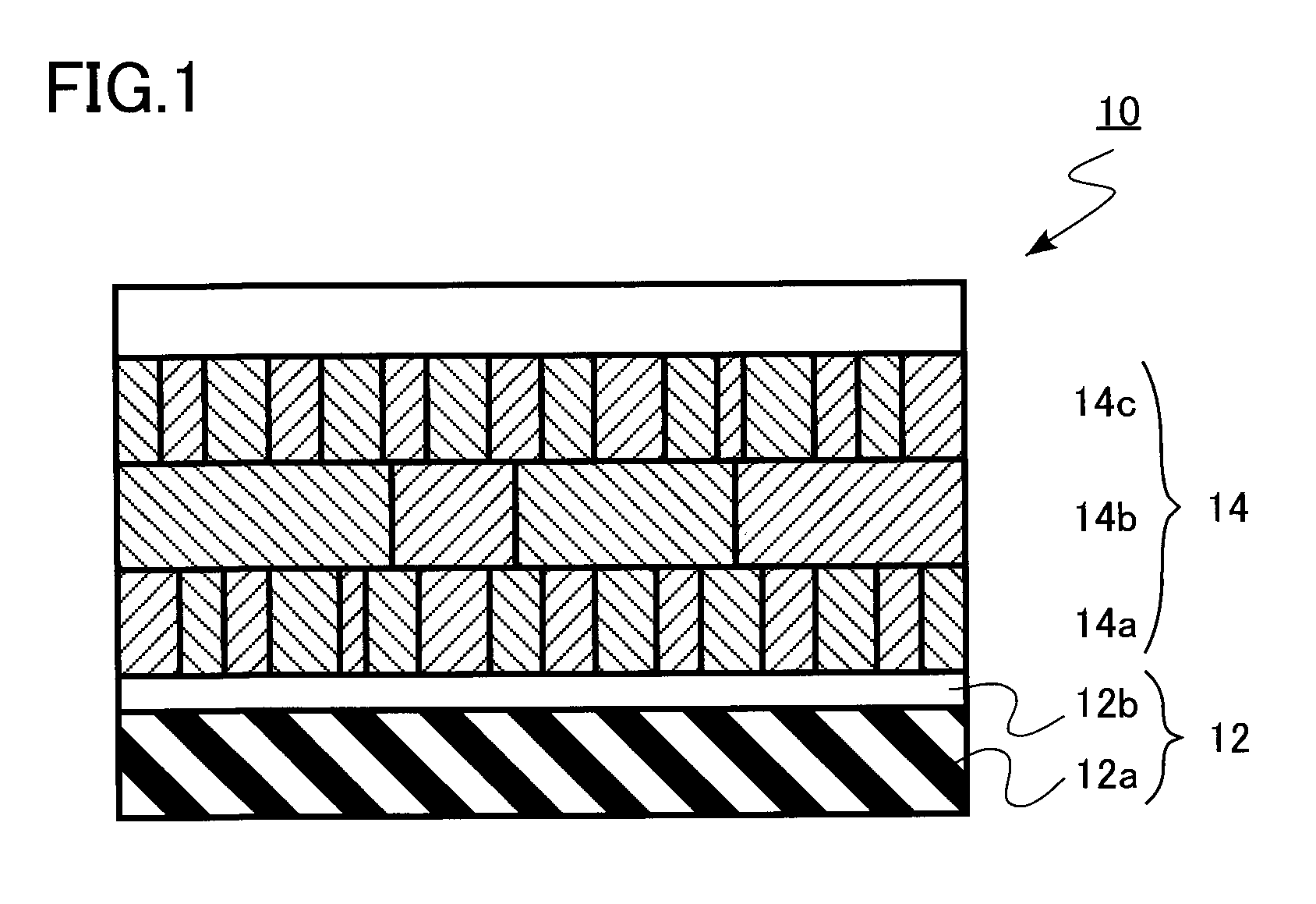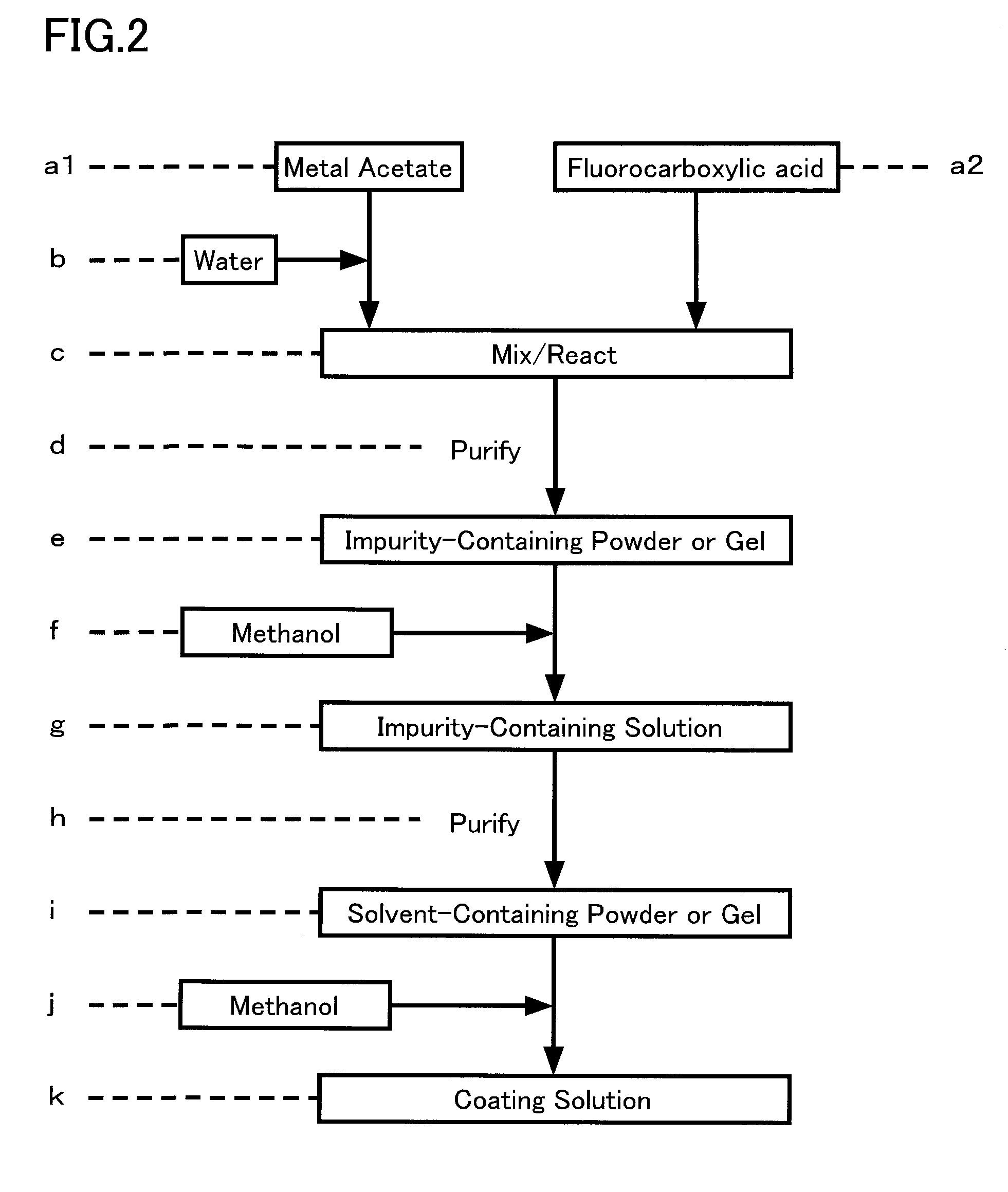Oxide superconductor and method of fabricating same
a superconductor and oxide technology, applied in the direction of superconducting magnets/coils, superconductor devices, magnetic bodies, etc., can solve the problems of inability to achieve excellent superconductors, inability to find effective residual carbon reduction techniques, and inability to meet the requirements of high crystallinity
- Summary
- Abstract
- Description
- Claims
- Application Information
AI Technical Summary
Benefits of technology
Problems solved by technology
Method used
Image
Examples
first embodiment
[0042]An oxide superconductor structure in accordance with first embodiment of this invention includes a substrate, and an oxide superconductor film which is formed on the substrate to have high crystallinity with a direction of crystal grains being oriented substantially perpendicularly to the substrate and with (100) planes of neighboring ones of the crystal grains being oriented to form therebetween an oblique angle ranging from zero to four degrees or ranging from eighty-six to ninety degrees. The oxide superconductor film has a multilayer structure made up of a plurality of high-density magnetic field trap layers stacked in almost parallel to the substrate and a low-density magnetic field trap layer which is interposed between adjacent ones of the high-density magnetic field trap layers. An average grain boundary width of the high-density magnetic field trap layers in a cross-section horizontal to the substrate is less than or equal to eighty nanometers. This average grain bou...
second embodiment
[0095]A fabrication method of an oxide superconductor structure in accordance with second embodiment of this invention is includes the steps of preparing as a coating solution a fluorocarboxylate-methanol solution with a mixture of barium and copper plus at least one metal which is selected from the group consisting of yttrium and lanthanoids with cerium, praseodymium, promethium and lutetium being excluded therefrom, laying the coating solution on a substrate to form a gel film, applying calcining process to the gel film to thereby form a calcined film, and applying to the calcined film firing process with more than two changes in gas flow rate during thermal processing and oxygen anneal to thereby convert the calcined film into an oxide film. This embodiment method is similar to the first embodiment with the humidification amount being replaced by the gas flow rate for being changed during the firing process.
[0096]As previously stated in conjunction with the first embodiment, it i...
examples
[0098]Practically implemented examples of this invention will be described below.
Preliminary Experiment 1
[0099]Firstly, experimentation was carried out to clarify the relationship of low-angle grain boundary width in oxide superconductor film versus superconductivity properties. Powders of hydrates of Y(OCOCH3)3, Ba(OCOCH3)2 and Cu(OCOCH3)2 were dissolved into ion-exchange water, respectively. Each was then mixed with a reaction-equivalent molar quantity of CF3COOH, followed by stirring thereof. Then, these were blended together at a metal ion molar ratio of 1:2:3, thereby obtaining a mixed solution. This mixed solution was put into an eggplant-shaped flask for performing reaction and purification for twelve (12) hours at a reduced pressure in a rotary evaporator, thus obtaining a semitransparent blue-colored gel or sol.
[0100]The resultant gel or sol was added with methanol (at step “f” of FIG. 2) having its weight equivalent to a hundredfold increase of that of the gel or sol, for ...
PUM
| Property | Measurement | Unit |
|---|---|---|
| Angle | aaaaa | aaaaa |
| Angle | aaaaa | aaaaa |
| Angle | aaaaa | aaaaa |
Abstract
Description
Claims
Application Information
 Login to View More
Login to View More - R&D
- Intellectual Property
- Life Sciences
- Materials
- Tech Scout
- Unparalleled Data Quality
- Higher Quality Content
- 60% Fewer Hallucinations
Browse by: Latest US Patents, China's latest patents, Technical Efficacy Thesaurus, Application Domain, Technology Topic, Popular Technical Reports.
© 2025 PatSnap. All rights reserved.Legal|Privacy policy|Modern Slavery Act Transparency Statement|Sitemap|About US| Contact US: help@patsnap.com



